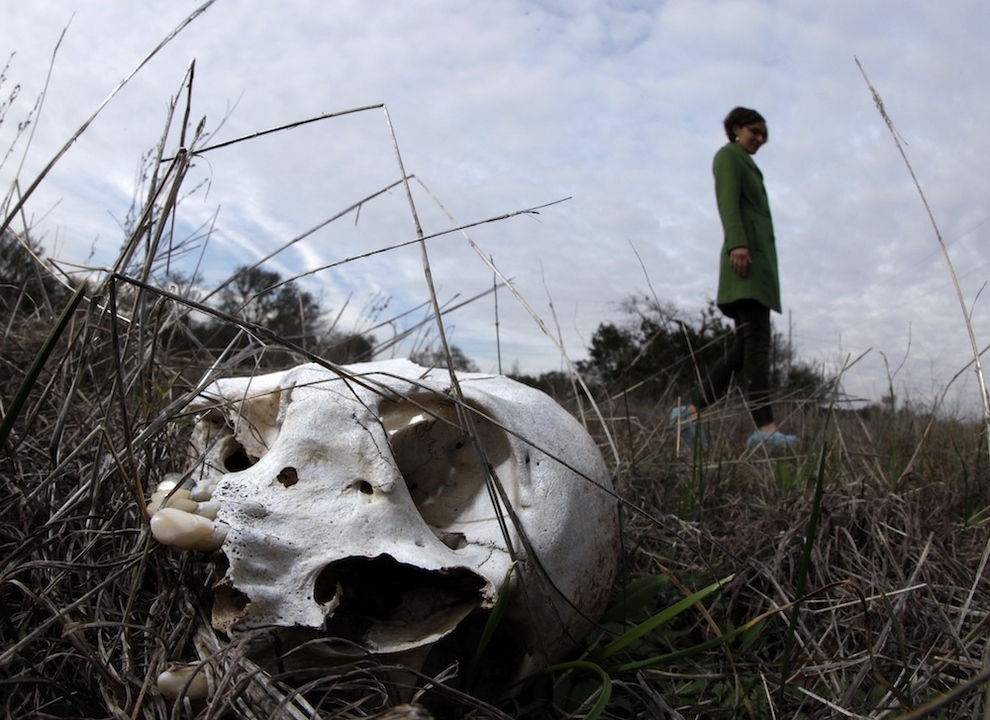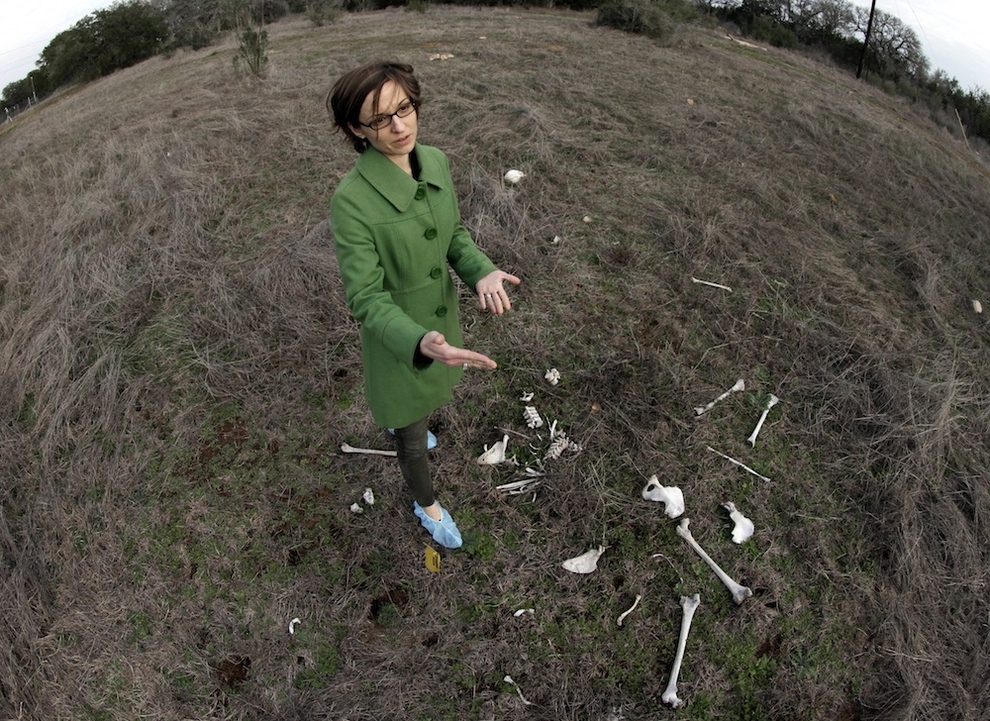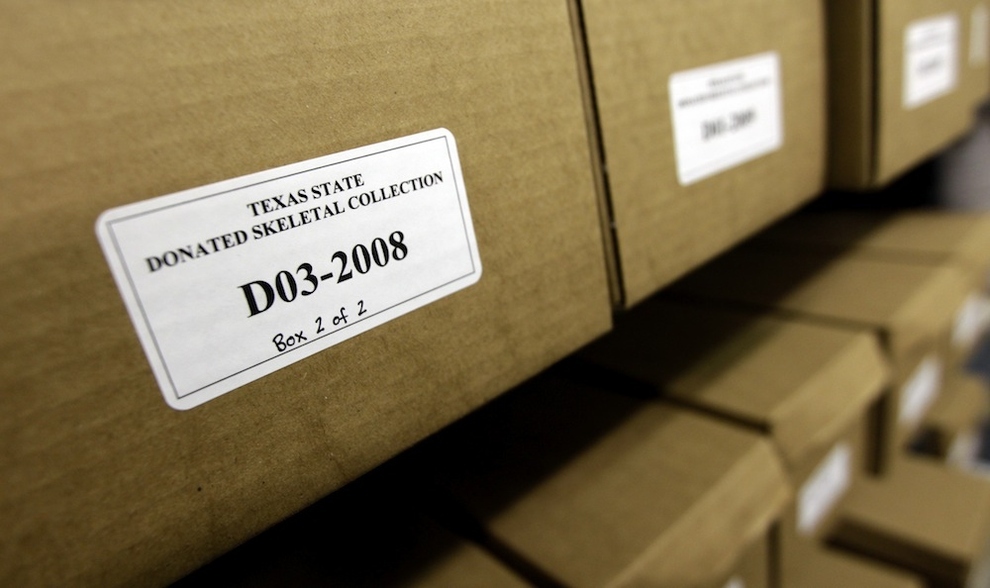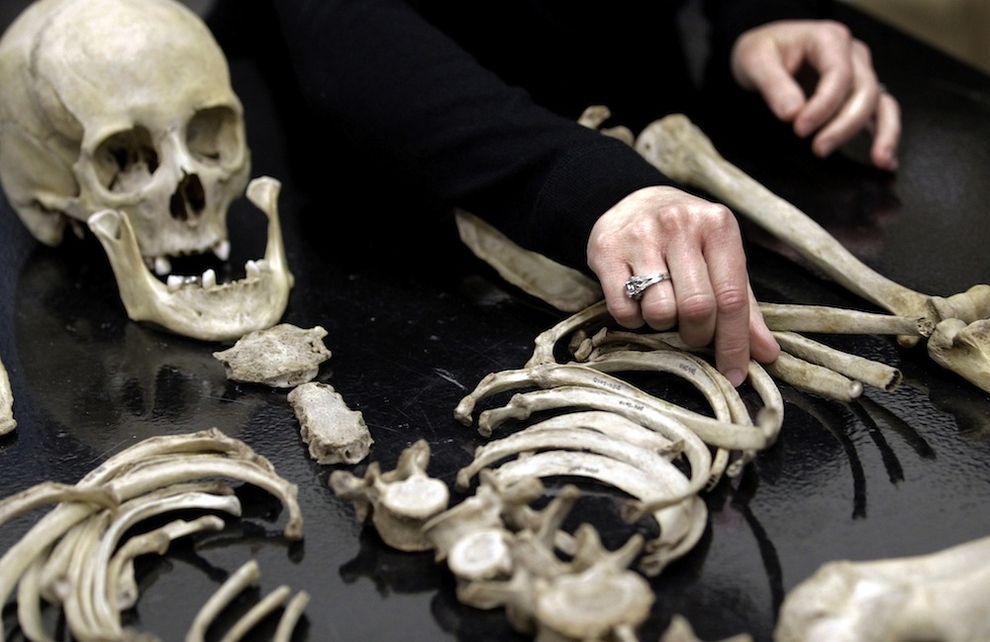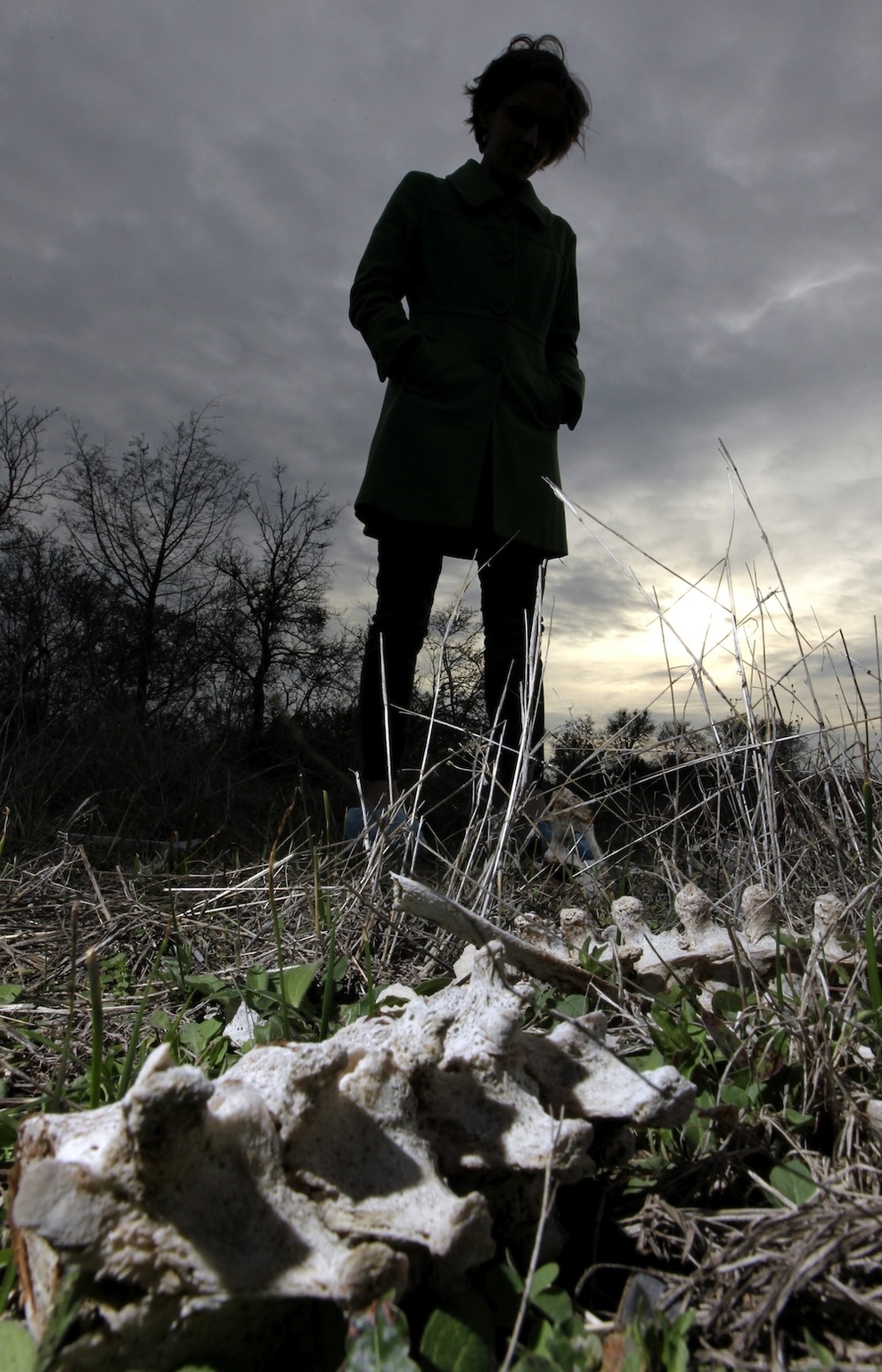The skeletal remains of Patty Robinson are shown at Texas State University’s “body farm,” officially the Forensic Anthropology Research Facility, Thursday, Feb. 9, 2012, in San Marcos, Texas. Robinson donated her body for research at the school. What they’re finding at the research facility debunks some of what they and other experts believed about estimating time of death for a person whose remains are found outdoors and exposed to the environment.
Kate Spradley, an assistant professor at Texas State University, looks over the skeletal remains of Patty Robinson. For more than five weeks, Robinson’s body lay undisturbed in a secluded field. Then a frenzied flock of vultures descended on the corpse and reduced it to a skeleton within hours.
Experienced investigators would normally have interpreted the absence of flesh and the condition of the bones as evidence that the woman had been dead for six months, possibly even a year or more. This recent vulture study has turned that assumption on its head.
“If you say someone did it and you say it was at least a year, could it have been two weeks instead?” said Michelle Hamilton, an assistant professor at the school’s forensic anthropology research facility. “It has larger implications than what we thought initially.”
Scientists set up a motion-sensing camera in the study that captured the vultures jumping up and down on the woman’s body, breaking some of her ribs, which investigators could also misinterpret as trauma suffered during a beating.
In the past, researchers had to rely on pig carcasses for this kind study. “Now that we have this facility and a group of people willing to donate themselves to science like this, we can actually kind of do what needs to be done, because pigs and humans aren’t equal,” Hamilton said.
Patty Robinson was an Austin woman who died of breast cancer in 2009 at age 72. She donated her remains to research, pictured here in the five-acre fenced area.
Her son, James, said the Texas State research seemed like a worthy project.
She’d be delighted “if she could come back and see what she’s been doing,” he said. “All of us are pretty passionate about knowing the truth.”
Read more: http://buzzfeed.com/gavon/body-farm-in-texas-studies-human-decomposition


